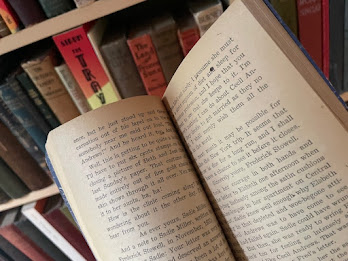Martha Ostenso
Toronto: News Stand Library, 1949
159 pages
The town is Bloomhill; the talk is of Elsbeth Payson. A few days before her eighteenth birthday, young Doctor Frederick Stowell catches Elsbeth at the Van der Water house. Priscilla Van der Water, a former "acrobatic dancer" now married to a brickyard foreman, is giving the girl a lesson on how to do a split. Stowell is horrified; Elsbeth lives in wealthy North Hill, and girls from North Hill do not visit Patchtown, Bloomhill's working class neighbourhood. The doctor orders her away, but she stands her ground: "Did you know, Freddie, that even for classical or professional ballroom dancing you should be able to do what's known as a 'split'?"
Elsbeth Payson's dream is to become a professional dancer. Her late mother approved, which is how she came to know Priscilla Van der Water in the first place. Her father, also late, looked to set his daughter off on a more conventional path, and so left almost everything to his two spinster sisters.
Almost everything.
On her birthday, Elsbeth is due to receive an inheritance of three thousand dollars (roughly $68,350 today). She intends to take the money, travel to New York, and study dance. A long-held plan, it comes off almost as Elsbeth had always envisioned, except that she's accompanied by pregnant Patchtowner Sadie Miller, whose fiancé was killed in one of Bloomhill's frequent industrial accidents.
Spanning 1933 and 1936, And the Town Talked is a Depression-era novel. I was interested in tensions between Bloomhill's classes, particularly after reading this early passage:
But And the Town Talked isn't much concerned with the plight of the proletariat. Though treated with sympathy, they're all pretty much the same: hard-working, cheerful, largely content with their lot in life. The exception is bad boy Cecil Andrews, who left Bloomhill's Patchtown for a life as a professional musician. He's a complex character, but only in relation to the others – Elspeth included.
And the Town Talked first appeared, marginally longer, in the February 1938 edition of McCall's.* Later that same year, Ostenso published Mandrake Root, which was subsequently translated to Norwegian, Hungarian, and Czech. Other novels followed: Love Passed This Way (1942), O River, Remember! (1943), Milk Route (1948), The Sunset Tree (1949). Her last book has my favourite title: A Man Had Tall Sons (1958). All were published by Dodd, Mead, but not And the Town Talked, which somehow ended up with a cheap paperback house located in the suburbs of Toronto, and is missing from nearly all her bibliographies.
Is And the Town Talked a masterpiece, as News Stand Library claims? Most certainly not!
Is Wild Geese a masterpiece, as academics have claimed? Here's hoping.
I'm moving my copy to the night table.
* Thanks to bowdler of Fly-by-Night, who spared me the task of comparing the McCall's and News Stand Library versions. His finding is that the latter cut short four of the novel's twenty-two chapters.
Object: A typical News Stand Library production, meaning that there is certain to be some sort of flaw. In this case, centre margins are so tight as to make it nearly impossible to read.
My copy was purchased earlier this year. Price: C$60.
The cover – uncredited – misleads in that Elsbeth has no child. Is she babysitting? Or is that meant to be minor character Sadie Miller?











I remember 'Wild Geese' being surprisingly good. I read one other later that was not as memorable (though it did have a metallic silver cover) and the writing still impressed me as being well above average.
ReplyDeleteI should have read Wild Geese when I bought my first copy, which I'm guessing was in my mid-twenties. John Metcalf aside, everyone who has read the novel seems to like it.
DeleteI wonder whether you've come across writing that suggests Douglas Durkin had a hand in its composition (and other Ostenso novels). I remember how much you like Durkin's The Magpie.
I remember one on my Profs getting into that issue (maybe Mary di Michele?) I think the evidence didn't support Durkin's claims. He may have made the claim when he was trying to get a share of her money. (I can't find anything online about that, but its what I remember from my lectures) From my reading, I don't see any evidence. Their voices are quite distinct. I imagine he may have proofread and offered observations. I remember that there exists somewhere quite a lot of writing on the subject from Ostenso. Been so long since I took those classes though.
Delete